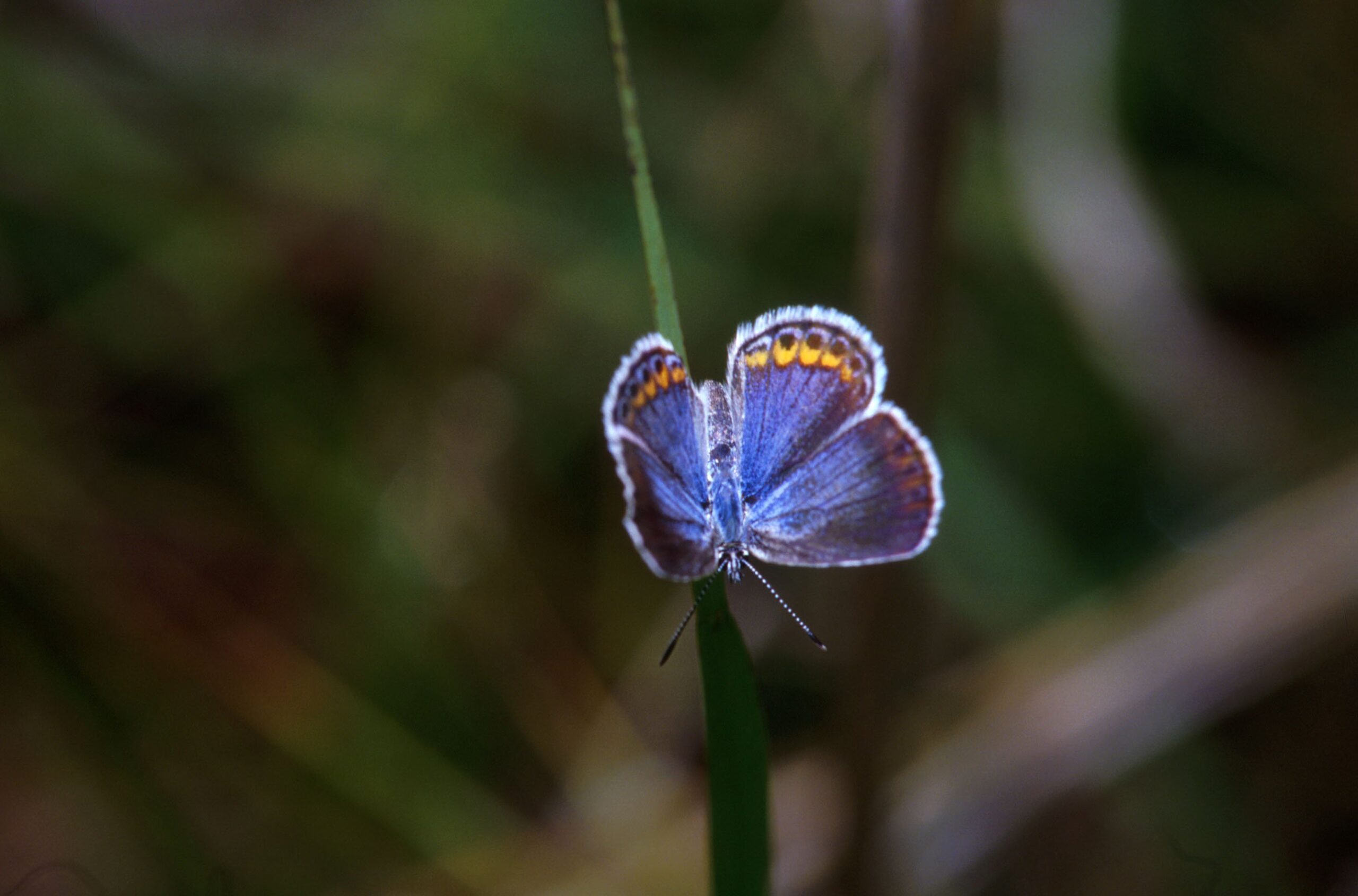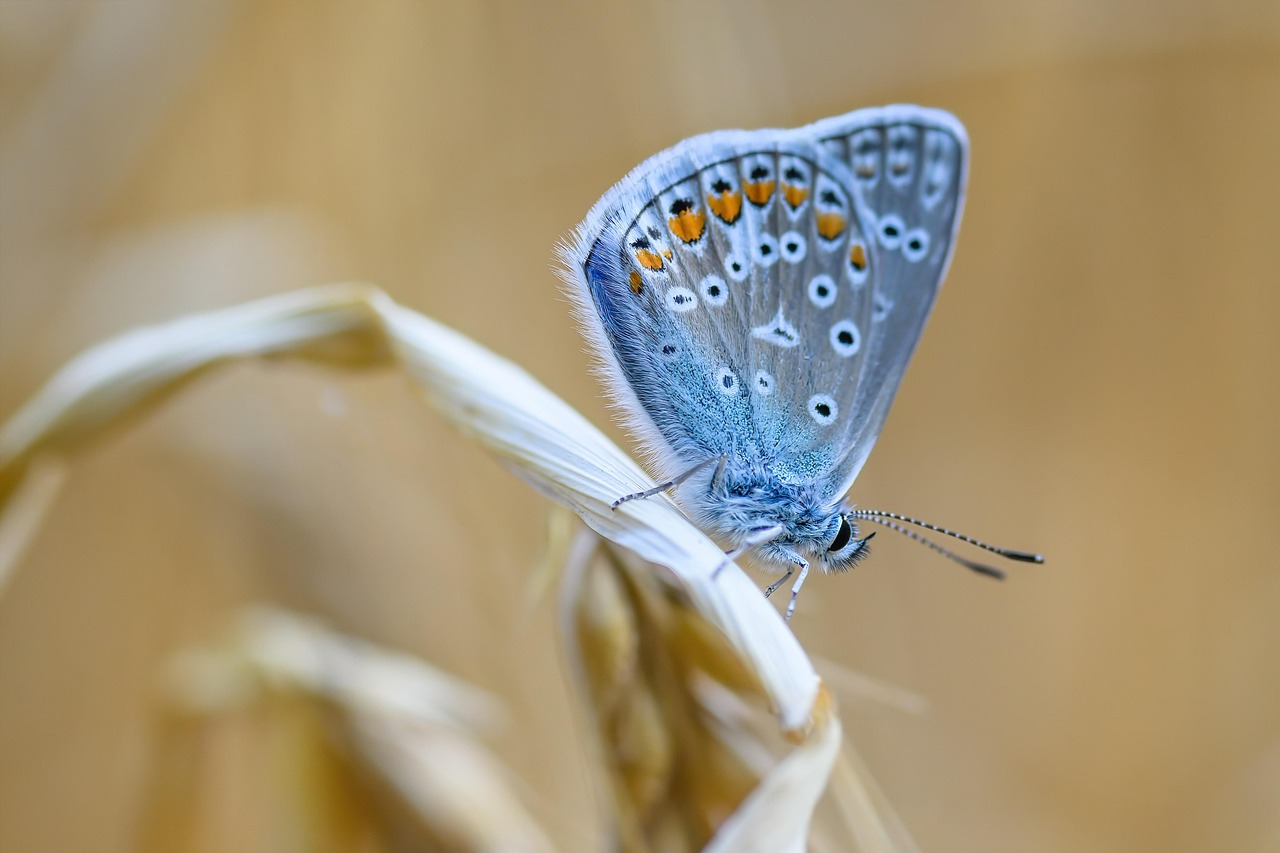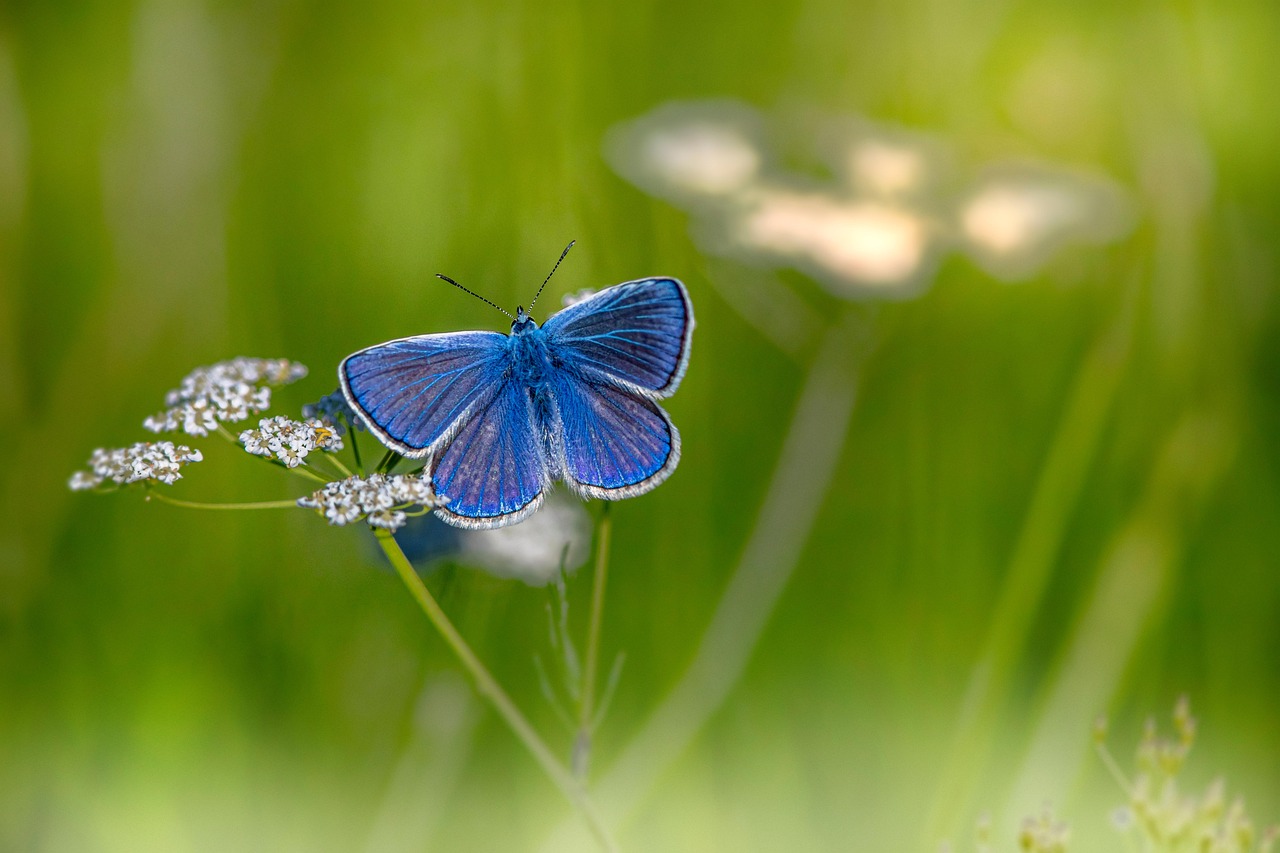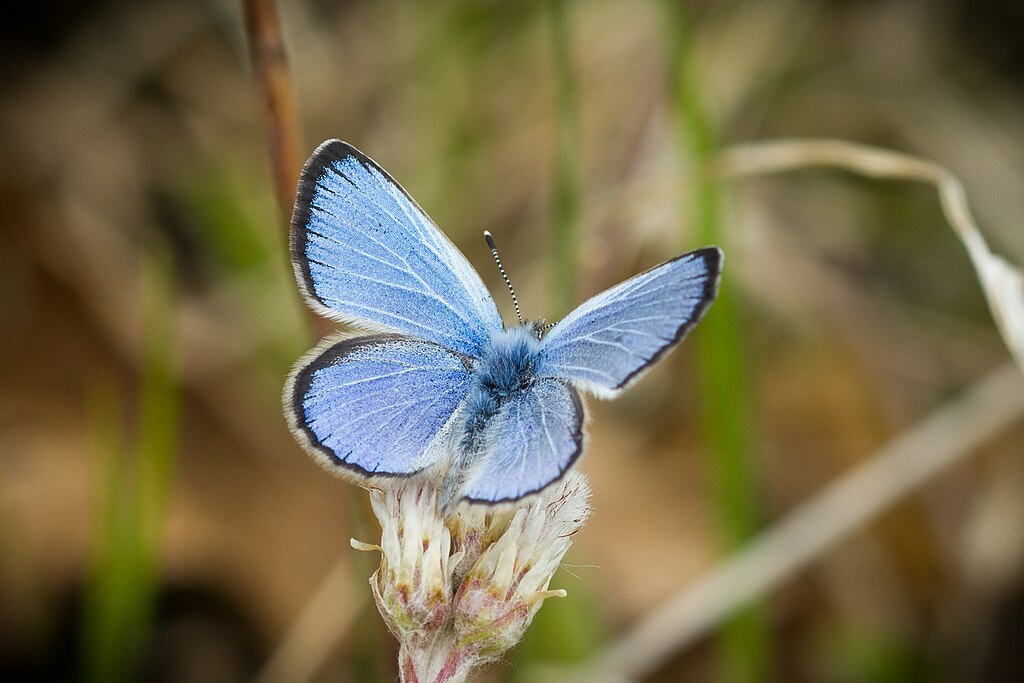Picture a butterfly so small it could rest comfortably on your thumbnail, yet so important that entire ecosystems depend on its survival. The Karner Blue butterfly isn’t just another pretty insect fluttering through meadows – it’s a living symbol of how delicate and interconnected our natural world truly is. This remarkable creature, with wings that shimmer like fragments of summer sky, has captured the hearts of scientists and nature lovers alike while facing challenges that would make any survival story seem impossible.
A Butterfly Born from Fire and Ice

The Karner Blue butterfly emerged from a landscape shaped by ancient glaciers and maintained by natural wildfires. Thousands of years ago, as massive ice sheets retreated from the Great Lakes region, they left behind sandy soils and open prairies that would become the perfect home for this delicate species. Native Americans witnessed these butterflies dancing through the grasslands long before European settlers arrived, and their presence marked healthy, thriving ecosystems. The butterfly’s story is deeply woven into the geological history of North America, making it a true native treasure that has adapted to survive in one of the continent’s most challenging environments.
The Science Behind the Shimmering Wings

What makes the Karner Blue’s wings so captivating goes far beyond simple beauty – it’s actually a masterpiece of natural engineering. The males display brilliant blue wings that seem to glow from within, created by microscopic scales that reflect light in specific wavelengths. Scientists have discovered that these scales contain tiny ridges and structures that work like natural prisms, breaking light into its component colors and reflecting only the blue spectrum back to our eyes. The females, meanwhile, sport more subdued grayish-brown wings with hints of blue, a color scheme that helps them blend into their surroundings while laying eggs. This sexual dimorphism isn’t just for show – it represents millions of years of evolution fine-tuning each gender for their specific survival roles.
Wild Lupine: The Only Plant That Matters

Here’s where the Karner Blue’s story becomes both fascinating and heartbreaking – this butterfly species has put all its evolutionary eggs in one basket. The wild lupine plant is literally the only food source that Karner Blue caterpillars can eat, making this one of nature’s most exclusive dining arrangements. Think of it like a restaurant that serves only one dish, and if that dish disappears, the entire establishment closes forever. The caterpillars feed exclusively on wild lupine leaves, and adult females will only lay their eggs on this specific plant species. This incredibly specialized relationship worked perfectly for thousands of years when wild lupine covered vast areas of the Great Lakes region, but it has become the butterfly’s greatest vulnerability in our modern world.
Life Cycle of a Vanishing Miracle
The Karner Blue butterfly lives two complete lives each year, a remarkable feat that doubles their chances of survival while also doubling their risks. The first generation emerges in late May and early June, when wild lupine plants are at their peak and the world seems full of possibilities. These butterflies mate, lay eggs, and die within just a few weeks, leaving their offspring to carry on the legacy. The second generation appears in July and August, facing the challenge of surviving through winter as tiny caterpillars in a world that’s becoming increasingly hostile to their existence. Each stage of their development – from egg to caterpillar to chrysalis to adult – requires specific environmental conditions that are becoming harder to find in our rapidly changing landscape.
The Great Lakes: A Fortress Under Siege
The Great Lakes region once provided millions of acres of perfect Karner Blue habitat, but today it’s like watching a fortress crumble from within. Michigan, Wisconsin, Minnesota, and parts of New York and Ontario originally supported thriving populations of these butterflies across sandy oak savannas and pine barrens. The landscape looked dramatically different then – imagine vast open spaces dotted with oak trees, carpeted with wild lupine, and maintained by natural wildfires that cleared competing vegetation. European settlement changed everything, as agriculture, urban development, and fire suppression transformed this ancient ecosystem into something barely recognizable. What once stretched across hundreds of thousands of acres now exists in scattered fragments, like islands of hope in a sea of development.
Vladimir Nabokov’s Butterfly Obsession
Few people realize that the famous author of “Lolita” was also a passionate butterfly expert who made significant contributions to our understanding of blue butterflies, including the Karner Blue. Vladimir Nabokov spent countless hours studying these delicate creatures, developing classification systems that scientists still use today. His love affair with butterflies went far beyond casual interest – he would spend entire days in the field, net in hand, chasing specimens with the same intensity he brought to his writing. Nabokov’s detailed observations and scientific papers helped establish the Karner Blue as a distinct species, and his work continues to influence butterfly research decades after his death. The intersection of art and science in Nabokov’s life reminds us that understanding nature requires both rigorous study and deep appreciation for beauty.
The Devastating Role of Fire Suppression

One of the most surprising threats to the Karner Blue butterfly comes from something most people consider positive – preventing forest fires. For thousands of years, natural wildfires regularly swept through the Great Lakes region, clearing out competing vegetation and maintaining the open habitats that wild lupine needs to thrive. These fires weren’t destructive disasters but rather essential gardening tools that nature used to maintain healthy ecosystems. When humans began suppressing all fires in the 20th century, they unknowingly signed a death warrant for countless Karner Blue populations. Without periodic burning, forests grew thick and dense, shading out the sun-loving wild lupine and eliminating the butterfly’s food source. It’s a perfect example of how good intentions can have devastating unintended consequences for wildlife.
Agricultural Transformation and Habitat Loss

The conversion of native prairies and oak savannas to farmland represents one of the most dramatic landscape changes in North American history, and the Karner Blue butterfly paid a terrible price for this transformation. Imagine if someone demolished your neighborhood and replaced it with a shopping mall – that’s essentially what happened to millions of acres of butterfly habitat over the past 150 years. Farmers, understandably seeking productive land for crops and livestock, couldn’t have known that they were eliminating one of the continent’s most specialized butterflies. The rich, sandy soils that wild lupine loved also happened to be excellent for agriculture, creating a direct conflict between human needs and butterfly survival. Today, less than one percent of the original oak savanna habitat remains in the Great Lakes region, making the Karner Blue one of the most habitat-restricted butterflies in North America.
Urban Sprawl: The Silent Butterfly Killer
While dramatic habitat conversion gets most of the attention, the steady creep of urban and suburban development has been equally devastating to Karner Blue populations. Unlike a forest fire or farming operation that transforms large areas quickly, urban sprawl nibbles away at butterfly habitat one subdivision, one shopping center, one road expansion at a time. These smaller habitat losses might seem less significant, but they’re actually more insidious because they fragment remaining populations into isolated patches. Picture trying to maintain a social life when all your friends live on different islands – that’s what happens to butterfly populations when their habitat becomes fragmented by development. Even small roads can become insurmountable barriers for creatures with wingspans measured in inches, effectively cutting populations off from each other and reducing their genetic diversity.
Climate Change and Shifting Seasons

Climate change is rewriting the rules of survival for the Karner Blue butterfly, creating challenges that this ancient species has never faced before. Rising temperatures are shifting the timing of wild lupine growth, potentially creating mismatches between when caterpillars need food and when plants are at their most nutritious. Imagine showing up to your favorite restaurant only to find it’s changed its hours – that’s what climate change is doing to the carefully synchronized relationship between butterflies and their host plants. Increased frequency of extreme weather events, from drought to severe storms, can wipe out entire local populations in a single season. Perhaps most concerning, changing precipitation patterns are altering the sandy soils that both wild lupine and butterfly larvae depend on, potentially making currently suitable habitats unsuitable for future generations.
Conservation Heroes in Action
Despite the overwhelming challenges, dedicated conservationists are fighting tirelessly to save the Karner Blue butterfly from extinction, and their efforts are starting to show remarkable results. Organizations like the U.S. Fish and Wildlife Service, The Nature Conservancy, and state wildlife agencies have developed sophisticated management plans that address everything from habitat restoration to population monitoring. These modern conservation heroes use prescribed burns to mimic natural fire cycles, hand-plant wild lupine in suitable habitats, and even relocate butterfly populations to safer locations. Their work requires the patience of a gardener, the precision of a scientist, and the dedication of a true believer – because saving a species this specialized demands nothing less than perfection. Some of the most successful conservation projects have involved partnerships between government agencies, private landowners, and volunteer groups, proving that butterfly conservation really does take a village.
Captive Breeding: Hope in Small Packages
One of the most intensive conservation efforts involves raising Karner Blue butterflies in carefully controlled laboratory environments, a process that’s both scientifically fascinating and emotionally challenging. Captive breeding programs collect butterfly eggs from wild populations and rear them through their complete life cycle in specialized facilities that can regulate temperature, humidity, and food availability with incredible precision. The process requires extraordinary attention to detail – imagine trying to recreate an entire ecosystem in a room, complete with the right plants, the right soil, even the right bacteria to support caterpillar development. Scientists have learned to hand-pollinate wild lupine plants, measure caterpillar growth rates down to the milligram, and time butterfly releases to coincide with optimal weather conditions. While captive breeding can’t solve the underlying habitat problems, it provides a crucial safety net that has prevented several local populations from disappearing entirely.
Success Stories That Inspire Hope

Against all odds, some Karner Blue conservation efforts have achieved remarkable success, proving that with enough dedication and resources, it’s possible to bring species back from the brink of extinction. The Albany Pine Bush Preserve in New York represents one of the most celebrated success stories, where intensive habitat management has helped stabilize a population that was down to just a few hundred individuals. Through controlled burns, invasive species removal, and careful monitoring, this site now supports thousands of butterflies and serves as a model for conservation efforts elsewhere. Michigan’s Fort Custer Recreation Area has similarly seen dramatic population increases following habitat restoration work, with butterfly counts rising from near zero to several thousand individuals over the course of a decade. These successes demonstrate that the Karner Blue butterfly can recover when given the right conditions, but they also highlight how much intensive management is required to maintain viable populations.
The Butterfly Effect on Ecosystem Health
The Karner Blue butterfly serves as what scientists call an “umbrella species” – protecting its habitat benefits countless other plants and animals that share the same ecosystem. When conservationists work to maintain the oak savannas and pine barrens that butterflies need, they’re also preserving habitat for rare plants, ground-nesting birds, and other specialized insects that depend on these increasingly rare environments. Think of the Karner Blue as a canary in a coal mine, except instead of warning about dangerous gases, it’s alerting us to the health of entire ecosystems. The butterfly’s presence indicates that an area still maintains the complex relationships between plants, insects, fire cycles, and soil conditions that characterized the Great Lakes region for thousands of years. Its absence, conversely, signals that these intricate connections have been broken, often irreversibly.
Conclusion

The Karner Blue butterfly represents far more than just another pretty insect facing extinction – it embodies the incredible fragility and resilience of nature itself. This tiny creature, with its specialized needs and ancient evolutionary history, reminds us that conservation isn’t just about saving individual species but about preserving the complex web of relationships that make ecosystems function. Every wild lupine plant protected, every prescribed burn conducted, and every butterfly successfully bred in captivity represents a small victory against the tide of habitat destruction and climate change. The fate of the Karner Blue ultimately rests in our hands, and the choices we make today will determine whether future generations will witness the magic of these shimmering blue wings dancing through restored prairies. What legacy will we choose to leave for the creatures that share our world?

